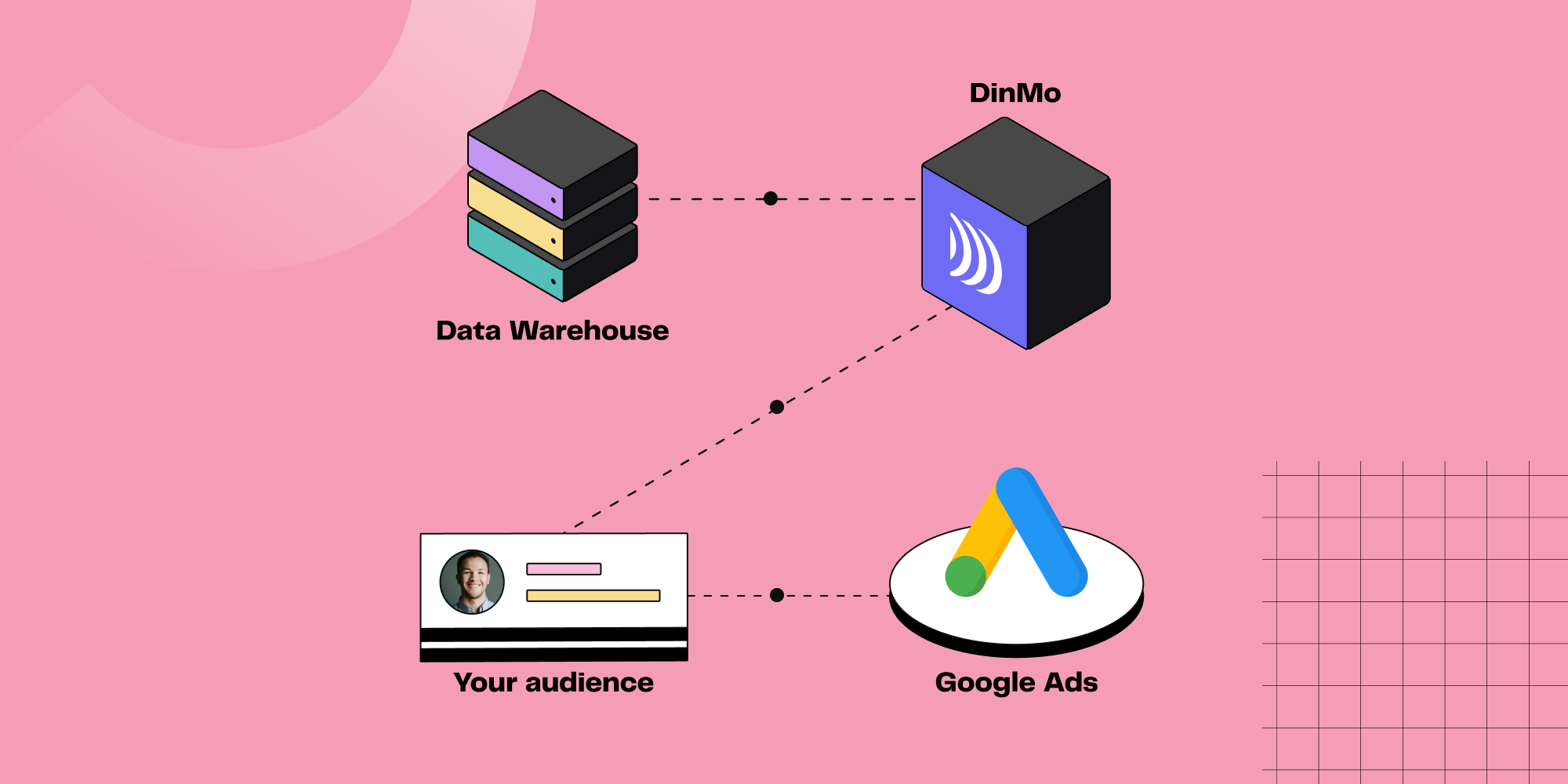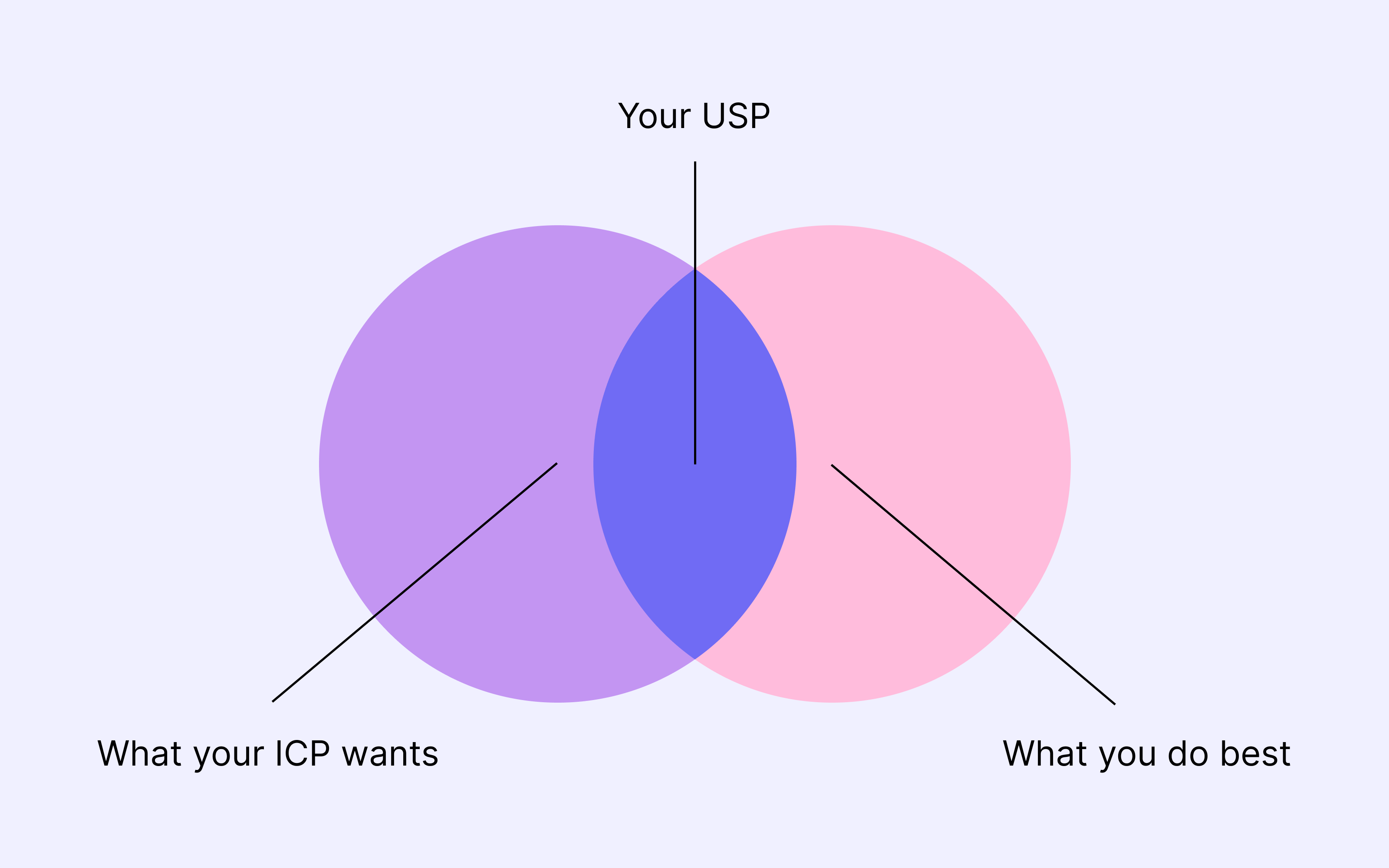
Facebook Custom Audiences for successful campaigns
5min • Last updated on Oct 4, 2024

Yomna Sfaxi
Growth & Marketing Manager
Introduction
A user is more likely to engage with your ad if he has interacted with your organization. Meta Ads understood that and created Facebook Custom Audiences, a system with a range of targeting options designed to maximize campaign effectiveness and reduce acquisition costs.
Considering the worldwide use of Facebook, it's important for you to optimize your costs on this network as much as possible.
By Q1 2023, Meta had more than 3.02 billion daily active people using its family of apps: Facebook, Instagram, WhatsApp, and Messenger
Statista.com
In this blog post, we'll explore Facebook Custom Audiences and how to leverage DinMo-Meta Ads integration to acquire new customers and enhance your marketing efforts.
Understanding Facebook's Custom Audiences
To start, let's understand the concept of Custom Audiences on Facebook. Custom Audiences is an ad targeting option that enables you to locate your existing audiences among people using Meta technologies. It's the perfect tool for implementing your audience strategies!
It operates as a matching system, connecting a contact with that person's corresponding Facebook Profile. This powerful tool allows you to create distinct audience segments based on a range of parameters, including:
Imported customer data
Engagement with your Facebook or Instagram pages
Website visits, app traffic, and more.
By leveraging these customized audiences of individuals who are already familiar with your business, you can adopt a highly targeted approach to deliver your ads to relevant individuals across multiple channels.
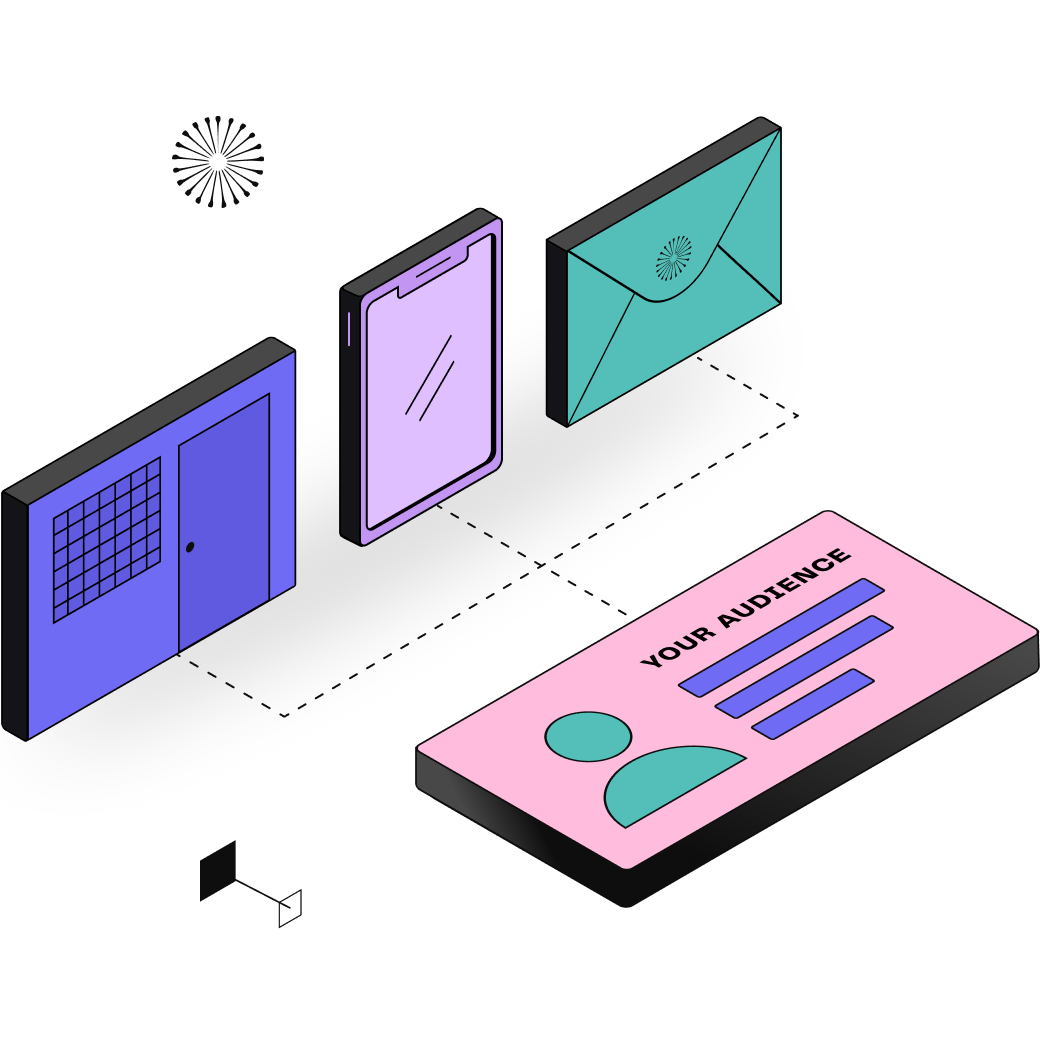
Types of Custom Audiences:
Website Custom Audiences:
Website Custom Audiences allow you to target people who have visited your website by using the Meta Pixel. By creating a Custom Audience based on website visitors, you can show targeted ads to this specific group. For instance, you can re-engage users who viewed a product page but didn't make a purchase, or target all website visitors within the past 30 days. The time frame is based on a rolling number of days, continuously updating the audience.
App Activity Custom Audiences:
Creating an App Activity Custom Audience enables you to target ads to specific groups of people who are most likely to take desired actions within your app. By leveraging the Meta SDK, you can send data from your app to Meta and use that data to define your custom audience. For example, if you are running an app ad engagement campaign with a focus on generating traffic or sales, you can create a custom audience consisting of users who have already installed your app. This allows you to optimize your ads for better performance.
Custom Audiences from Customer Lists:
Custom Audiences from customer lists are based on individuals who have demonstrated an interest in your business or product. Unlike Facebook engagement or Meta Pixel, these audiences are created using "identifiers" that you have collected from your audience. These identifiers could include email addresses of newsletter subscribers or phone numbers shared by past customers. By uploading these customer lists to Facebook, you can target these specific groups and re-engage with them.
Engagement Custom Audiences:
Engagement Custom Audiences are composed of individuals who have interacted with your content across various Meta technologies and services. "Engagement" refers to actions taken by users, such as watching videos, following a Facebook Page, or interacting with lead generation ads. By utilizing Engagement Custom Audiences, you can show your ads to people who have taken these specific actions.
Keep in mind that "engagement" custom audiences are different from custom audiences from your website. While both do take actions into account, engagement custom audiences use actions taken across Meta platforms (Facebook, Instagram, Messenger etc.), whereas custom audiences use actions taken on your website tracked by a Meta Pixel (otherwise known as "events")
Enhance your Custom Audiences with your Cloud Data
The increasing use of ad blockers and restrictions on third party cookies has led to a decline in the effectiveness of Meta pixels, thereby impacting the performance of Custom Facebook custom audiences. To address this issue, businesses should directly tap into their CRM for audience targeting, let’s see how:
Leverage Existing Customer Data
To effectively build a custom audience on Facebook, leveraging your customer data from other sources is key. Your data warehouse serves as a central single source of truth, collecting and unifying customer data from various sources and platforms including CRM, both offline and online.
By building your audience on top of your data warehouse and syncing it with your Meta Ads account, you ensure that your audiences remain precise, accurate, and up-to-date, which significantly boosts the efficiency of your marketing campaign.
Moreover, building your audience on top of your data warehouse allows for synchronization with various platforms and ensures consistency of your activations across channels.
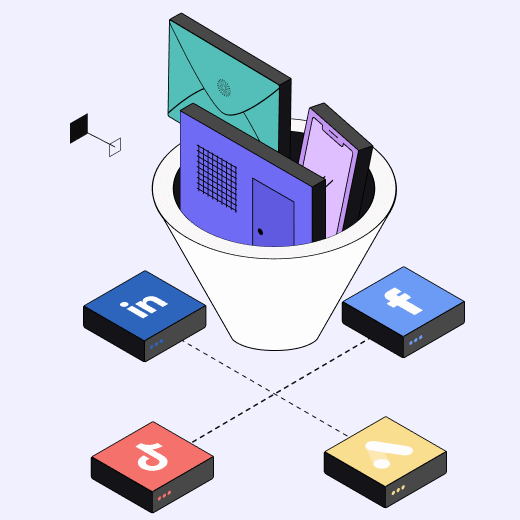
Solution Media
Streamline Audience Building with DinMo
Facebook requires critical data columns, such as first name, last name, country, city, and state, and any errors in data importation could lead to mismatching and inaccuracies in your custom ads. The DinMo-Meta Integration is designed to eliminate the hassle of manual CSV uploads and provide timely feeding of advertising algorithms with both online and offline conversion events.
DinMo Platform ensures the accuracy and effectiveness of your targeting by facilitating the matching of your data with Facebook properties through the field mapping step.
With DinMo's Visual Audience Builder and its segmentation capabilities, you can create your custom audience directly within DinMo, easily sync it with Meta Ads and run your ads with just a few clicks. Furthermore, DinMo’s no-code Audience builder provides additional targeting options, such as engagement with your Facebook or Instagram pages, video views, and website visits, allowing you to further refine your audience and reach individuals who have shown specific interest or engagement with your brand.
To learn how to use DinMo with Meta Ads, you can refer to this tutorial DinMo x Meta.
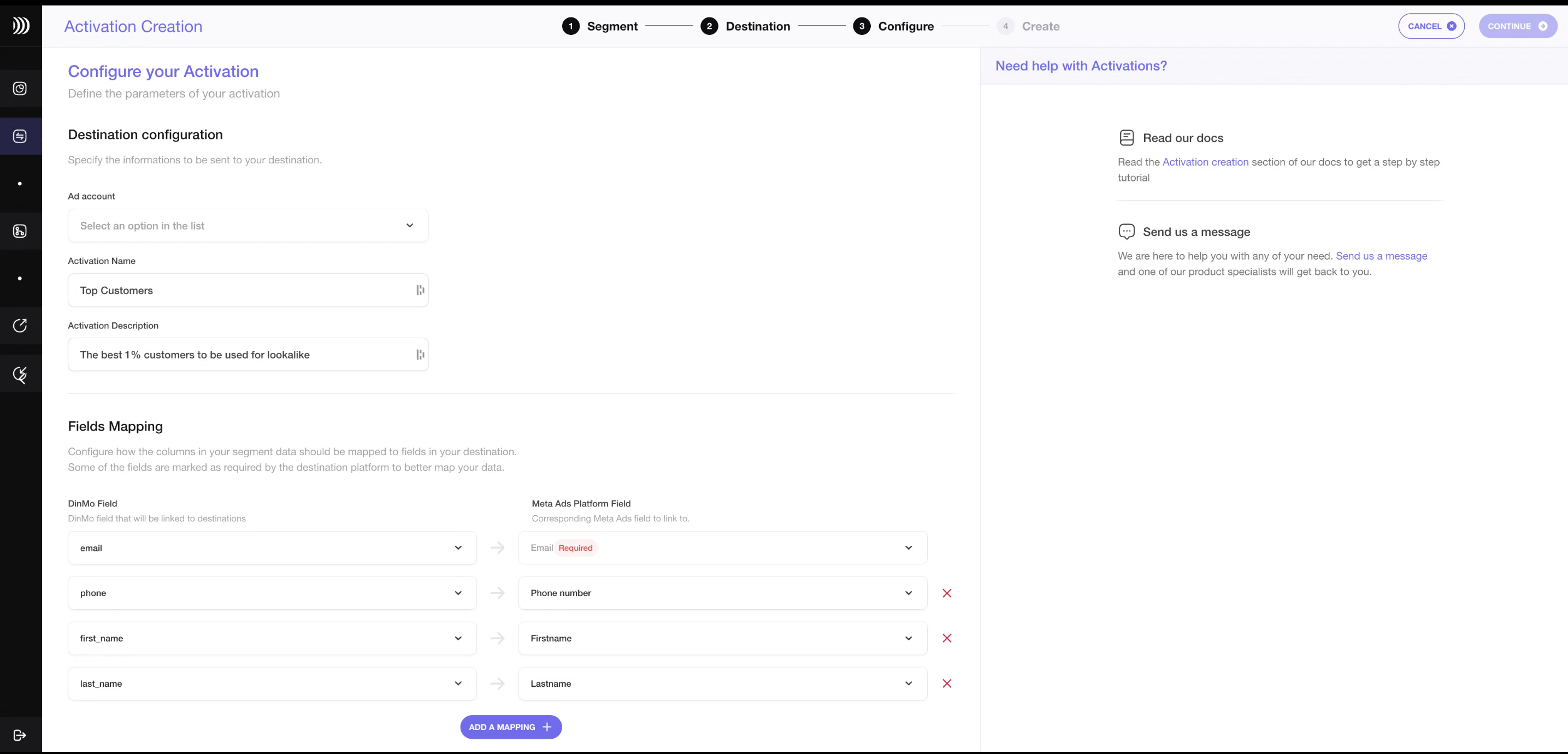
DinMo can be used to sync audiences to all the Meta Ads platforms
Create Lookalike Audiences and expand your Acquisition
Once you have successfully synced your Facebook ads with your cloud Data using DinMo to create a custom audience, the next step is to leverage this audience to build lookalike audiences. Lookalike audiences are powerful tools that enable you to reach new prospects who share similar characteristics with your existing customers. This allows you to expand your reach and target potential customers who are more likely to convert.
Conclusion
Leveraging Facebook Custom Audiences and integrating with DinMo provides you with powerful tools to enhance your acquisition campaigns. By targeting specific groups of individuals who are already familiar with your brand or have shown interest in your products, you can maximize your marketing efforts. Syncing your cloud data and CRM systems through DinMo ensures accurate and up-to-date custom audiences, enabling consistent activation across multiple channels.
To experience the full benefits of DinMo's integration with Meta Ads and unlock the potential of your acquisition campaigns, book a demo with DinMo today













